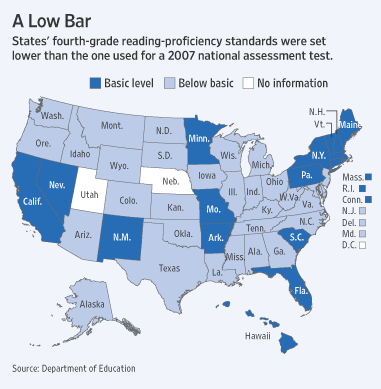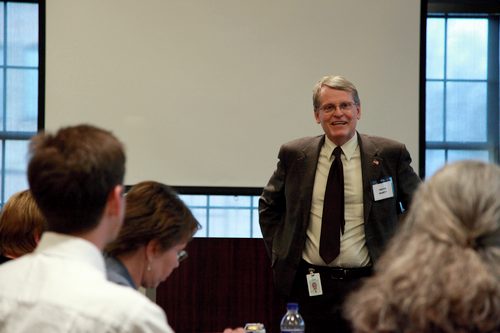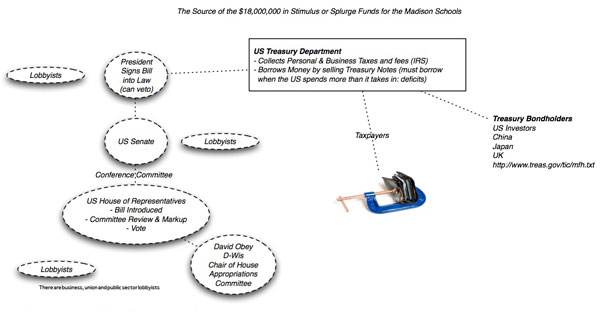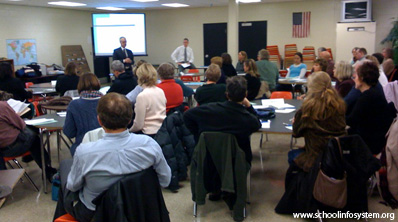It is excusable for people to think of Mediocrity as too little of something, or a weak approximation of what would be best, and this is not entirely wrong. However, in education circles, it is important to remember, Mediocrity is the Strong Force, as the physicists would say, not the Weak Force.
For most of the 20th century, as Diane Ravitch reports in her excellent history, Left Back, Americans achieved remarkably high levels of Mediocrity in education, making sure that our students do not know too much and cannot read and write very well, so that even of those who have gone on to college, between 50% and 75% never received any sort of degree.
In the 21st century, there is a new push to offer global awareness, critical thinking, and collaborative problem solving to our students, as a way of getting them away from reading nonfiction books and writing any sort of serious research paper, and that effort, so similar to several of the recurring anti-academic and anti-intellectual programs of the prior century, will also help to preserve the Mediocrity we have so painstakingly forged in our schools.
Research generally has discovered that while Americans acknowledge there may be Mediocrity in our education generally, they feel that their own children’s schools are good. It should be understood that this is in part the result of a very systematic and deliberate campaign of disinformation by educrats. When I was teaching in the high school in Concord, Massachusetts, the superintendent at the time met with the teachers at the start of the year and told us that we were the best high school faculty in the country. That sounds nice, but what evidence did he have? Was there a study of the quality of high school faculties around the country? No, it was just public relations.
The “Lake Woebegone” effect, so widely found in our education system, is the result of parents continually being “informed” that their schools are the best in the country. I remember meeting with an old friend in Tucson once, who informed that “Tucson High School is one of the ten best in the country.” How did she know that? What was the evidence for that claim at the time? None.
Mediocrity and its adherents have really done a first-class job of leading people to believe that all is well with our high schools. After all, when parents ask their own children about their high school, the students usually say they like it, meaning, in most cases, that they enjoy being with their friends there, and are not too bothered by a demanding academic curriculum.
With No Child Left Behind, there has been a large effort to discover and report information about the actual academic performance of students in our schools, but the defenders of Mediocrity have been as active, and almost as successful, as they have ever been in preserving a false image of the academic quality of our schools. They have established state standards that, except in Massachusetts and a couple of other states, are designed to show that all the students are “above the national average” in reading and math, even though they are not.
It is important for anyone serious about raising academic standards in our schools to remember that Mediocrity is the Hundred-Eyed Argus who never sleeps, and never relaxes its relentless diligence in opposition to academic quality for our schools and educational achievement for our students.
There is a long list of outside helpers, from Walter Annenberg to the Gates Foundation, who have ventured into American education with the idea that it makes sense that educators would support higher standards and better education for our students. Certainly that is what they hear from educators. But when the money is allocated and the “reform” is begun, the Mediocrity Special Forces move into action, making sure that very little happens, and that the money, even billions of dollars, disappears into the Great Lake of Mediocrity with barely a ripple, so that no good effect is ever seen.
If this seems unduly pessimistic, notice that a recent survey of college professors conducted by the Chronicle of Higher Education found that 90% of them reported that the students who came to them were not very well prepared, for example, in reading, doing research, and writing, and that the Diploma to Nowhere report from the Strong American Schools program last summer said that more than 1,000,000 of our high school graduates are now placed in remedial courses when they arrive at the colleges to which they have been “admitted.” It seems clear that without Muscular Mediocrity in our schools, we could never have hoped to achieve such a shameful set of academic results.
“Teach by Example”
Will Fitzhugh [founder]
Consortium for Varsity Academics® [2007]
The Concord Review [1987]
Ralph Waldo Emerson Prizes [1995]
National Writing Board [1998]
TCR Institute [2002]
730 Boston Post Road, Suite 24
Sudbury, Massachusetts 01776 USA
978-443-0022; 800-331-5007
www.tcr.org; fitzhugh@tcr.org
Varsity Academics®





